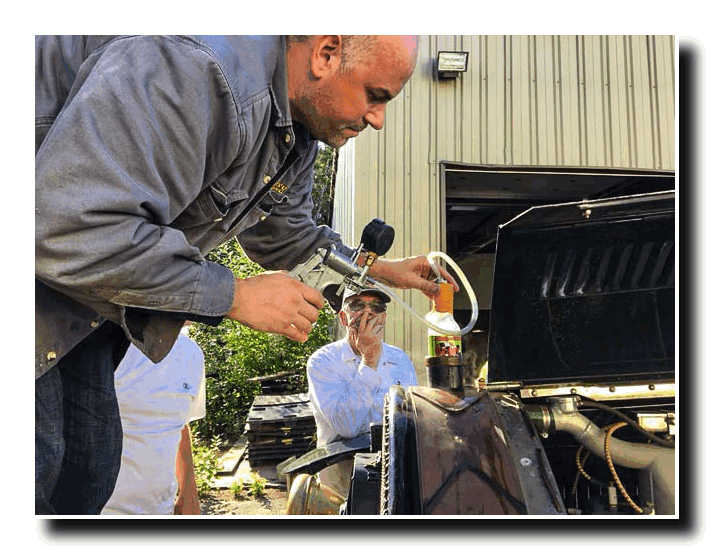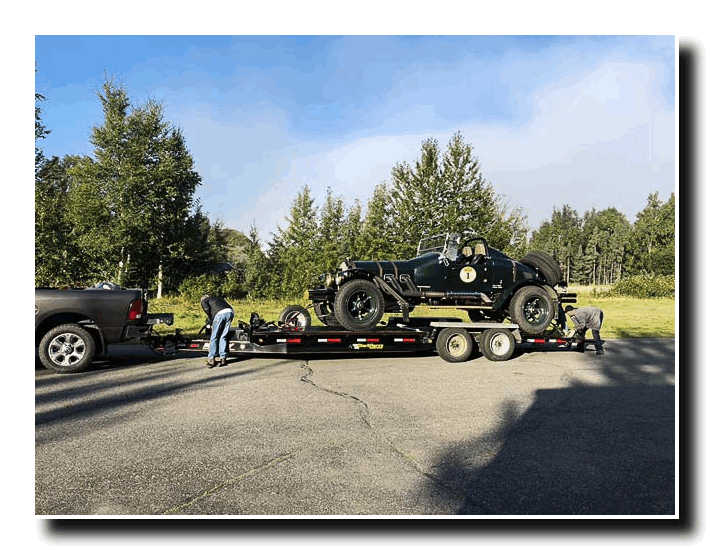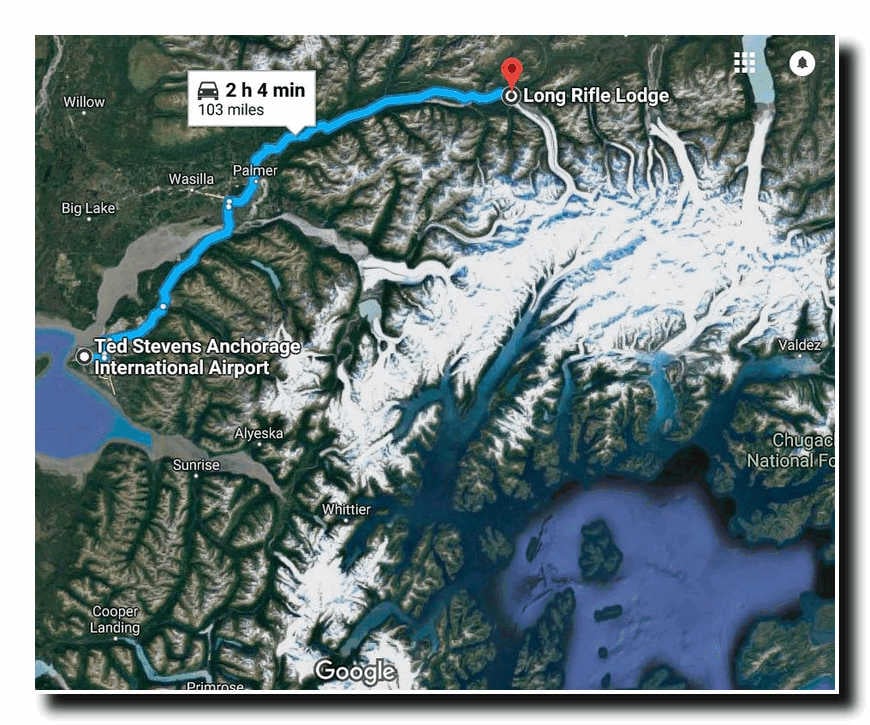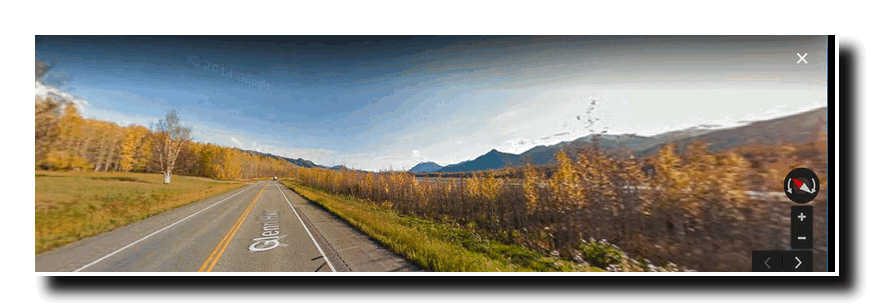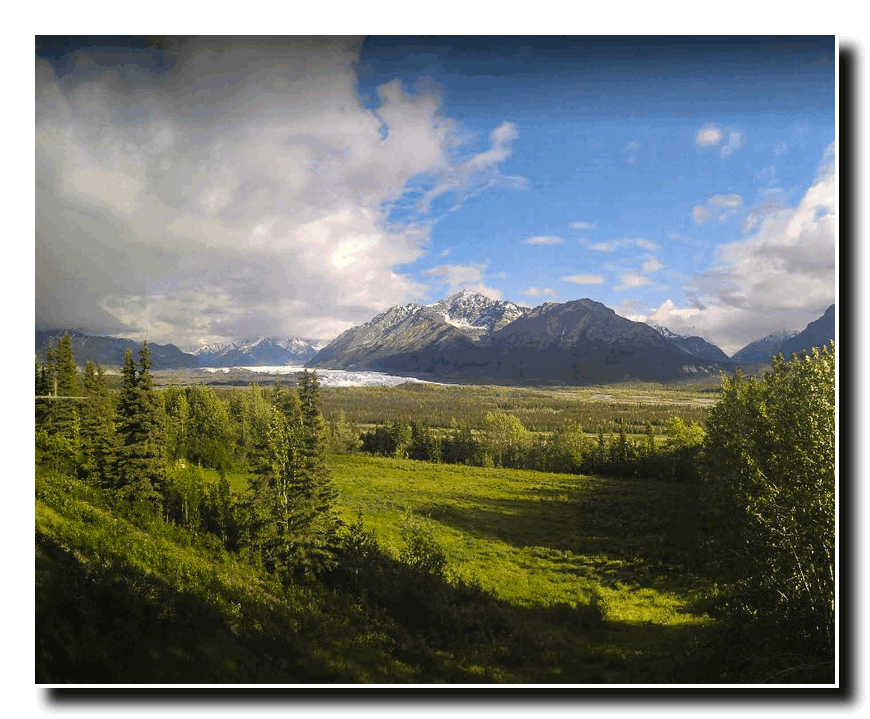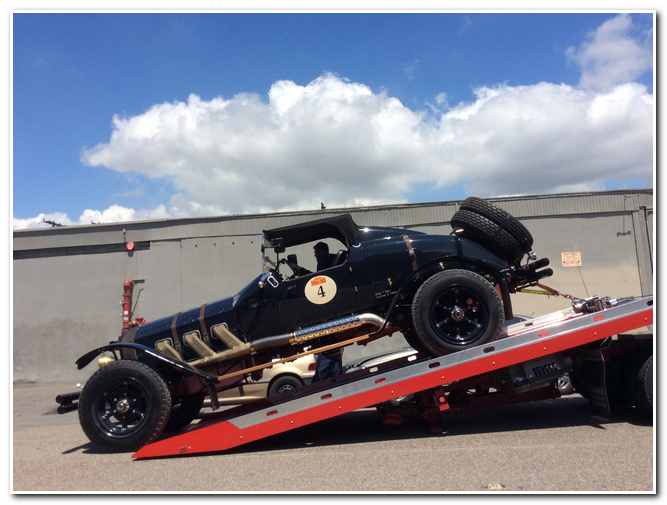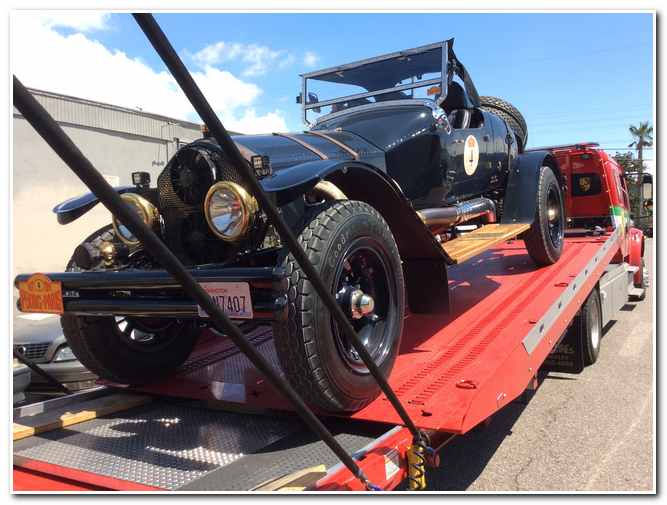After picking up Guillaume Marceau and his father at the Anchorage Airport, and after an extra day of engine tinkering and severe indigestion from ALF #1, a decision was made to trailer that classic-car for a ride back to Seattle. Well, it’s punishment you know. Here is the GPS link for the remaining ALF #4 so you can follow its progress. Steve is driving ALF #4 with Guillaume acting as navigator. The two other fellows will enjoy their views of Alaska in the Dodge Ram with trailer. There may still be downtime repair during the journey, so be forewarned. It’s not as if they are in the middle of nowhere with early 1900 cars you know…..oh…right. Well, it’s not as though they are in the middle of Mongolia you know.
Here is Guillaume trying to solve the overheating problem by feeding ALF #1 a bottle of Pepto Bismol.
But nope.
ALF #1 is much too valuable to become a doorstop (although they threatened it by reminding it of this steam shovel they had seen the day before). So a decision was made to load the sick puppy on the trailer, and drive it back to Seattle.
Brother Byron and Wife Katherine said their goodbyes and winged their way back to civilization as Steve, Dwight, Guillaume and Rick were left to drive south to Seattle along the Alcan highway where traffic signals are just rough guidelines and arrival at your destination is not a foregone conclusion.
Anyway, here are a few photos:
The proposed route for today.
You may want to look at their GPS destination (see the link above), then go over to Google Maps and
Browse the Street View Images to see what they are seeing (as below).
More when there’s more…



